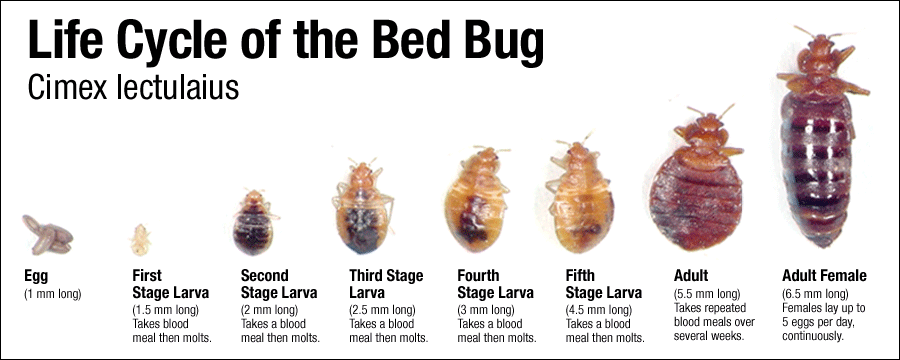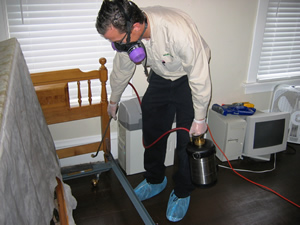How to Identify Bed Bug Bites and Prevent Future Infestations
How to Identify Bed Bug Bites and Prevent Future Infestations
Blog Article
Get Enlightened About the Kinds Of Parasite Control Approaches and Their Benefits for House Owners
Comprehending the different insect control techniques available to property owners is necessary for efficient insect management. Property owners who are educated can make critical options that not only address insect concerns yet additionally boost the general high quality of their living environment.
Chemical Pest Control Approaches
Chemical bug control methods are a vital component of incorporated bug administration strategies for home owners looking for effective remedies to pest problems. These approaches include the application of chemical substances made to get rid of or deter parasites that endanger individual residential or commercial property, wellness, and convenience. Common chemicals made use of include pesticides, herbicides, fungicides, and rodenticides, each customized to target specific bugs.
The primary benefit of chemical pest control is its fast effectiveness; lots of formulations supply immediate results, lowering pest populations dramatically quickly. In addition, advancements in chemical solutions have resulted in items that are extra eco-friendly and have lower toxicity degrees for non-target microorganisms when applied properly.

Organic Insect Control Techniques
All-natural pest control methods have actually gotten importance as house owners seek much safer and much more lasting options to traditional chemical strategies. Organic pest control methods utilize all-natural predators, bloodsuckers, or microorganisms to manage bug populations properly. This technique is not just eco friendly yet likewise minimizes the danger of harm to non-target types, including helpful insects and wild animals.
One of one of the most common organic control methods includes presenting natural killers into the atmosphere. For instance, ladybugs can be utilized to regulate aphid populations, while nematodes target soil-dwelling parasites like grubs. In addition, parasitoids-- microorganisms that live on or within a host-- can be utilized to regulate particular parasite species by laying eggs inside them, eventually bring about their death.
Another technique is making use of biopesticides, which are derived from natural products such as germs, minerals, or plants (bed bug exterminator). These products can successfully target parasites while posing minimal danger to pet dogs and human beings. Generally, organic parasite control methods give house owners with a reliable means of pest management that lines up with environmental principles, promoting a healthier living atmosphere while minimizing dependence on synthetic chemicals
Mechanical Insect Control Methods
Mechanical bug control strategies include a range of techniques that physically avoid or eliminate insects without making use of chemicals. These techniques are particularly useful for property owners seeking ecologically friendly options while ensuring the safety and security of their space.
One common approach browse around this site is using barriers, such as webs, screens, and traps, which stop insects from entering homes or particular areas. Setting up home window screens can effectively maintain insects out, while utilizing physical barriers around yards can discourage bigger bugs like deer or bunnies. Additionally, mechanical catches developed for rats can catch and remove these parasites without the requirement for why not try here toxic compounds.
Another efficient strategy entails the use of vacuum cleaners and brooms to eliminate pests directly from surface areas. Regular cleansing and maintenance can dramatically reduce bug populations by getting rid of food resources and hiding areas. Utilizing tools like ultrasonic pest repellents can discourage numerous pests through noise waves that are undesirable to them but inaudible to humans.
Social Pest Control Practices
Cultural bug control techniques focus on modifying the atmosphere and monitoring techniques to create conditions that are less helpful to pest problems. These techniques are fundamental in maintaining a balanced environment and lowering the reliance on chemical interventions. By changing agricultural methods, house owners can properly hinder pests while promoting plant health.
One common approach includes crop rotation, which disrupts the life cycles of pests by changing the kinds of plants grown in a specific location (bed bug exterminator). This not just lessens pest populations but also enhances soil health. Additionally, intercropping-- growing varied crops in proximity-- can puzzle insects and decrease their ability to locate their recommended host plants
Water monitoring is one more essential element of cultural practices. Proper irrigation strategies can stop standing water, which works as a breeding place for mosquitoes and various other insects. Additionally, maintaining sanitation around the home, such as on a regular basis getting rid of debris and food waste, can significantly lower bug tourist attraction.
Integrating these social methods right into a detailed insect monitoring technique permits house owners to create an atmosphere that naturally hinders insects, therefore improving the performance of other control approaches while promoting lasting gardening and landscaping.

Integrated Pest Management Approaches
Integrated Insect Administration (IPM) stands for an all natural strategy that combines various strategies to effectively handle pest populations while reducing environmental effect. This method incorporates organic, social, physical, and chemical methods to attain lasting bug from this source control. By analyzing pest populaces and their all-natural opponents, IPM highlights tracking and determining bugs before applying control measures.
Among the core concepts of IPM is using limits, which establish the level of pest task that necessitates treatment. This makes sure that treatments are applied only when necessary, reducing the dependence on chemical pesticides. Organic control techniques, such as introducing all-natural predators or parasites, operate in combination with cultural practices like plant turning and environment control to disrupt pest life process.
In addition, IPM motivates the use of least-toxic chemical alternatives when treatment is required, prioritizing items that present very little risk to non-target microorganisms and the atmosphere. For property owners, adopting IPM comes close to not only boosts the efficiency of insect management yet likewise promotes a much healthier living atmosphere, fostering biodiversity and lowering chemical exposure. Ultimately, IPM equips property owners to make enlightened decisions that stabilize insect control with eco-friendly obligation.
Conclusion
In conclusion, understanding the various pest control methods empowers homeowners to make informed choices relating to pest monitoring. Each strategy-- chemical, organic, mechanical, social, and incorporated insect management-- offers distinct advantages that provide to different needs and choices.
Recognizing the different bug control techniques available to homeowners is essential for reliable bug administration.Chemical pest control approaches are a critical part of integrated pest monitoring methods for property owners seeking reliable options to pest infestations. On the whole, organic pest control methods provide home owners with an effective means of parasite administration that straightens with environmental principles, advertising a healthier living atmosphere while decreasing dependence on synthetic chemicals.
Social pest control techniques focus on modifying the environment and administration techniques to produce conditions that are less helpful to pest invasions.In verdict, understanding the numerous pest control techniques empowers house owners to make informed decisions pertaining to pest management.
Report this page